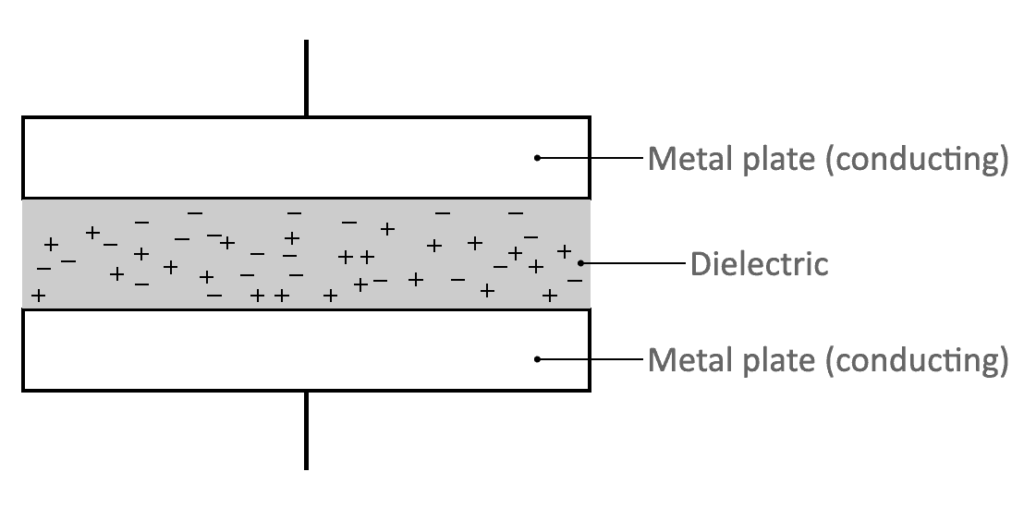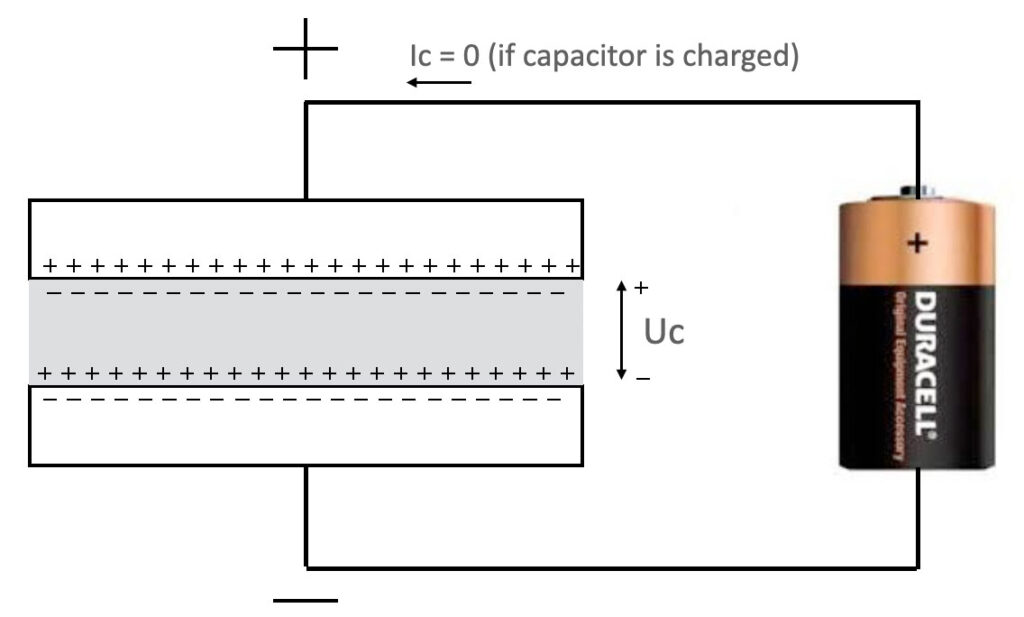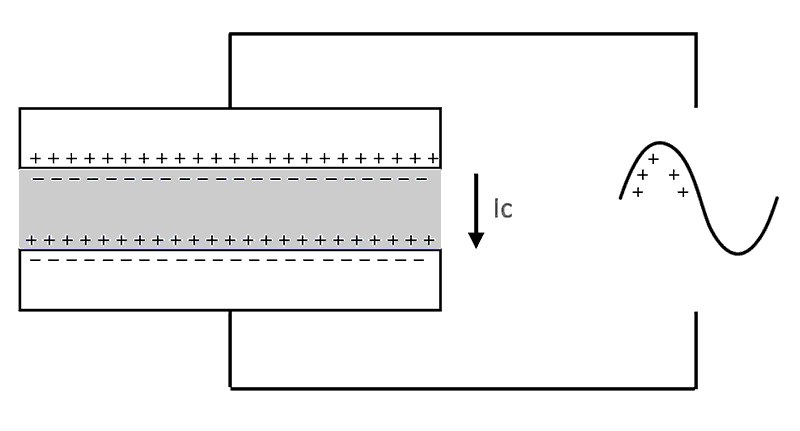A capacitor is a passive component that consists of two metal (conducting) plates that are separated by a material called a dielectric. This dielectric is an electrical insulator that can be polarized by an applied electric field. The positive and negative particles inside the dielectric are not polarized if there’s no voltage applied.

The capacity of this component is measured in Fahrad. Common values in audio world are between 1pF – 10.000uF. When a DC voltage is applied to both sides of the capacitor, the capacitor will charge (look at the moved particles). For a very short time (time = 0) there will be a current flow that charges the capacitor. After the capacitor is charged, there will be no current anymore – until you change the polarity.
The capacitor is a super small chargeable battery.

Important to remember:
for DC voltages, the capacitor is a huge resistor or a blockade.
When an AC voltage is applied, the result will be different! Because of the changing direction of the current, the capacitor will be charged positive and charged negative and it will conduct the current in both ways. In other words: for ac-voltages (audio signals for example), the capacitor is a conductor. See the animation below.

for AC-volatges, the capacitor is a conductor